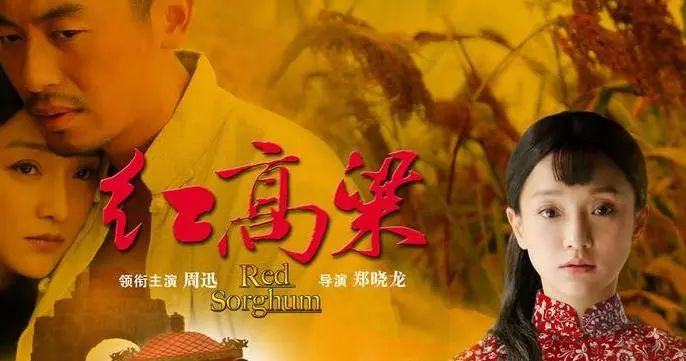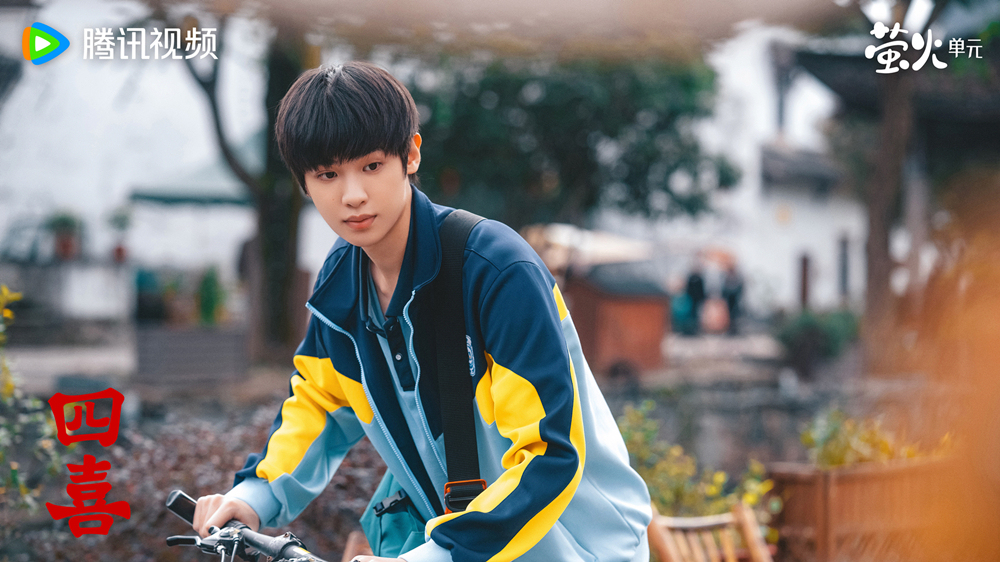
The TV series "Red Sorghum," directed by Zheng Xiaolong and with Zhao Dongling serving as the chief screenwriter, features the original author Mo Yan as the chief consultant. It premiered in October 2014 and concluded today on the Classic Replays channel. Set against the backdrop of the Anti-Japanese War in Gao Mi, Shandong, the series narrates the story of the Gao Mi people, represented by the character Jiu'er, who fight with their lives to showcase a tale filled with courage and national spirit.
The Chinese Television Arts Committee (hereinafter referred to as the "Arts Committee") held a seminar after the series premiere. The overview of this seminar, to be published in the March 2015 issue of "Chinese Television," is being republished here. Let us delve into the creative experiences of "Red Sorghum" from the perspectives of its creators and art critics, exploring the transformation of classic literary masterpieces into classic television dramas.

Creators' Insights
Promoting Patriotism and Highlighting National Sentiment
● Mo Yan, original author of "Red Sorghum" and chief consultant for the series
I believe this work stands on four key points: first, it promotes the spirit of patriotism; it isn't merely the main theme to fight against the enemy — even without the Anti-Japanese elements, it still embodies patriotism. Second, it reflects traditional moral values; many characters possess values and moral standards that align with our positive traditional culture. Third, it tells a brilliant, intricate, and rich story. Fourth, it creates a diverse array of character roles.
While some plot details may not align with lived experience, they resonate with artistic expression and satisfy the psychological needs of the common people.

● Zhao Dongling Chief screenwriter of "Red Sorghum"
I am especially grateful to Mr. Mo Yan for generously allowing me to adapt the work. I have great "ambition" to express the wild growth of humanity during chaotic times while preserving the original spirit and vitality of the source material.
Many viewers comment that the Anti-Japanese portions are lacking, but I believe the process of helping the common people develop from merely knowing "home" to understanding "country" is equally important.
I aspire to depict the 1930s as a "Along the River During the Qingming Festival," showcasing the lives of people across various aspects and strata of society, bringing forth their essence during times of foreign invasion. Art always carries a sense of regret, and I hope to continue improving myself.

● Zheng Xiaolong Director of "Red Sorghum"
Turning "Red Sorghum" into a TV series was quite challenging. It has a linear structure that requires a wealth of material, storylines, and a greater number of characters. I only felt confident in executing it after reviewing Zhao Dongling’s story outline. The screenplay provided excellent characters, stories, and plots, and the treatment of details during filming ensured its logical coherence, transforming fiction into reality.
Initially, I misguidedly focused only on casting actresses from Shandong, but later, both the producer and Mr. Mo Yan offered suggestions regarding casting. Looking back, the selection of these actors is one reason why this series resonates with younger audiences.
Experts' Thoughts
Grasping the Spirit and Essence of the Original Work
Creating Adaptations that Follow Artistic Principles
● Li Jun Renowned art critic
Three criteria can measure the success of a television adaptation of a classic or renowned piece: first, the transformation of artistic style. Literature creates imagery through the power of language, while television uses visuals and sound to express themes and shape characters. This series has been very successful in transforming its artistic style, with a narrative structure that follows creative principles. Second, it reflects a new sense of the era. When the novel "Red Sorghum" was published in 1986, people sought individuality and freedom of human spirit. Today, three decades later, interpersonal relationships have become more complex, and people's pursuits are more diverse. Merely emphasizing wildness and savagery is insufficient to meet viewers' aesthetic demands. Third, loyalty to the original work. The series captures the blood and essence of the Chinese nation, including pursuits of love and freedom, critiques of corrupt regimes, and reflects national and personal dignity.

● Liang Hongying Former editor-in-chief of "Literary and Art News"
The complexity of adapting this series is quite evident, yet the screenwriter broadened the narrative scope and added advantages specific to television storytelling—such as Jiu'er's growth under constrictions, family infighting, and the courageous acts of several supporting male characters—thus enhancing its visual appeal. From the perspectives of narrative length, density, and difficulty, the television version of "Red Sorghum" meets high standards.

● Li Yesen Commissioner at the Chinese Television Arts Committee
"Red Sorghum" effectively captures the spirit and essence of the original work, aligning with contemporary audiences' aesthetic tastes, achieving a union of artistic spirit and popular appeal. The adaptation corresponds with artistic realities and creative principles. It does not strive to outdo the novel and film but instead explores new avenues of breadth, utilizing a method of preserving the core while adding branches and leaves, enriching the narrative from multiple angles. Hence, it is a piece more substantial and engaging than the film.

Vivid Restoration of Historical and Regional Characteristics
● Fan Yongge
Member of the All-China Writers Association and Deputy Director of the Film and Television Literature Committee
The TV series "Red Sorghum" authentically restores the regional color and historical setting of Gao Mi, presenting a complete portrayal of the atmosphere of the national resistance in Jiaodong and the local historical scenes in Gao Mi. Both the national and family stories are told smoothly, accurately restoring structures and rich cultural nuances enhance its watchability.
The series also excels in distilling themes. The portrayal of a collective resistance under the Anti-Japanese backdrop and a willingness to die offers a poetic elevation of the original work, providing a fresh array of character representations for contemporary critiques.

● Li Yeping Former Vice Chairman of the Shandong Writers Association and Literary Consultant for the Series
This series achieves a grand and profound tone while also being delicately refined, restoring the social life of the time to its fullest extent. Every detail is perfectly combined with modern aesthetic awareness. Simultaneously, it skillfully merges impressionistic and realistic styles, excellently capturing the essence of human spirit concerning freedom and savagery. It reflects the soul of Mo Yan's original novel, which encompasses passion, courage, struggle, and redemption.
Enhancements and Expansions of Cultural Connotations
● Yan Jingming Former member of the CPC Committee of the Chinese Writers Association and Secretary of the Secretariat
The TV drama "Red Sorghum" centers on the character Jiu'er, broadening the scope of family narratives and presenting increased narrative tightness. From the perspective of national sentiment, it showcases the screenwriter's skills in handling period dramas, excellently merging plot breakthroughs with historical facts. The eventual fates of the characters are imbued with legendary qualities, successfully transforming a romantic story into a realistic legend.
● Yin Hong Former Executive Vice Dean of the School of Journalism and Communication at Tsinghua University
The original novel "Red Sorghum" is a product of both Western cultural influence and roots in Chinese culture. Jiu'er embodies the character within that historical context. The TV series cleverly retains her rebellious, individualistic, and subversive traits towards order and authority, while also contextualizing her within a genuine national narrative. Thus, it maintains the original cultural spirit while shifting themes, rendering the work more relatable and recognizable.

Reflections on the TV Version of "Red Sorghum"
Experts have voiced some opinions on the limitations of this series. First, regarding character development, Jiu'er’s spirit seems insufficiently wild and too urbanized; there needs to be a careful balance when depicting characters' flaws, and some characters seem one-dimensional and lack depth. Second, the realism of the series tends to restrict imaginative freedom; the transition from romantic, symbolically rich literary text to realistic television drama may create some cracks between theme and style. Lastly, the relationship between authenticity and rationality needs careful handling, as some plot elements and scenes in the series lack everyday logic.


